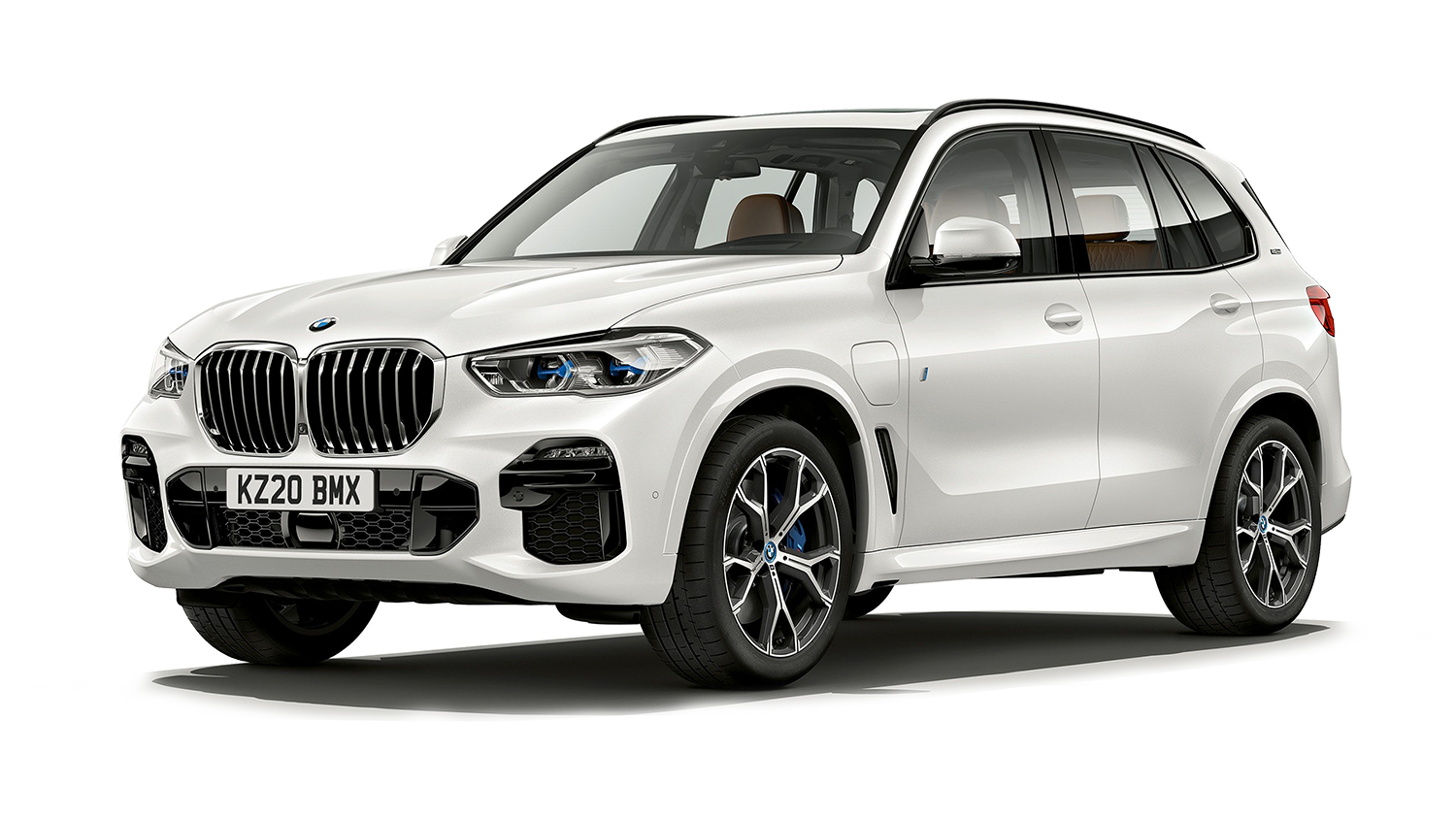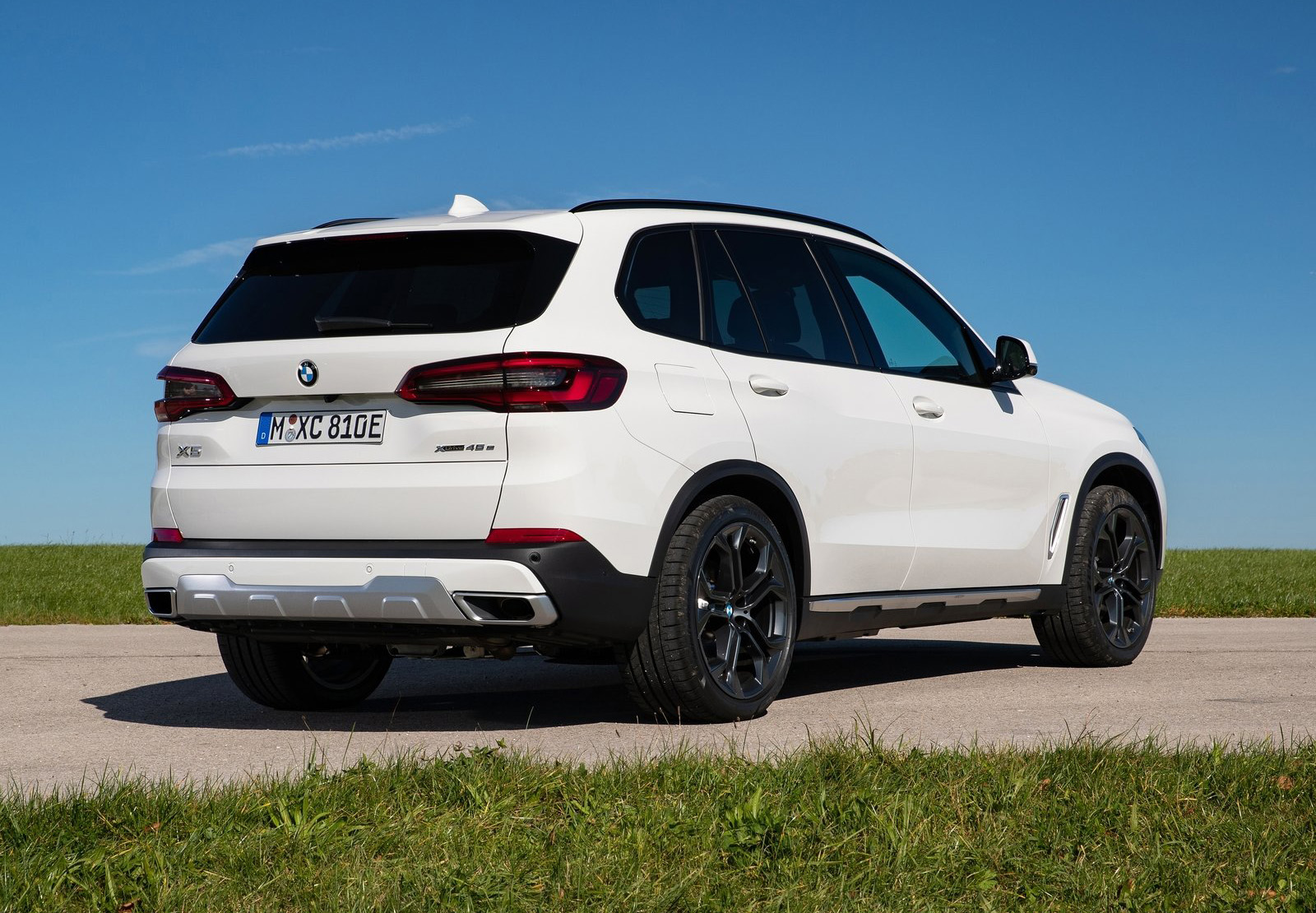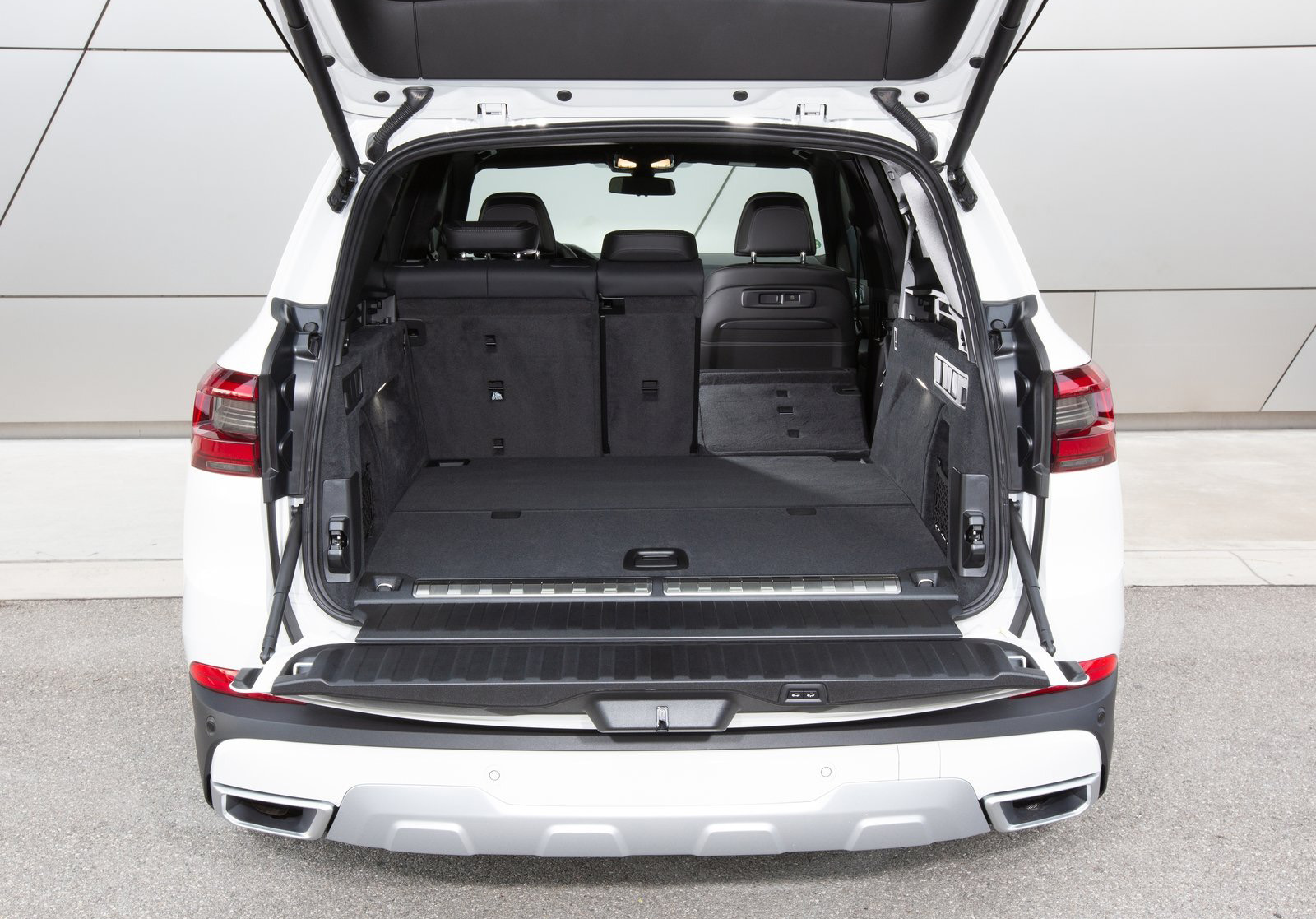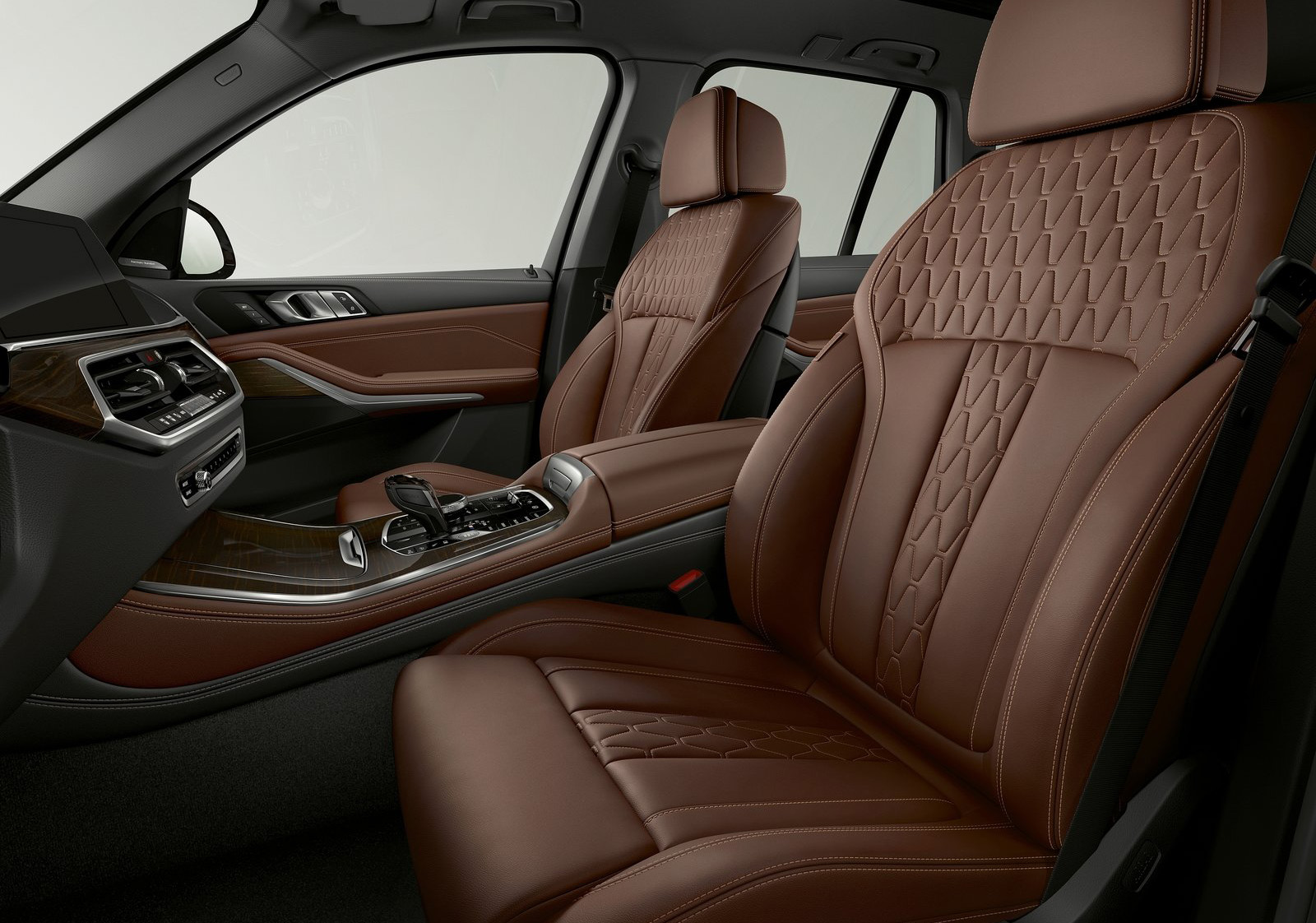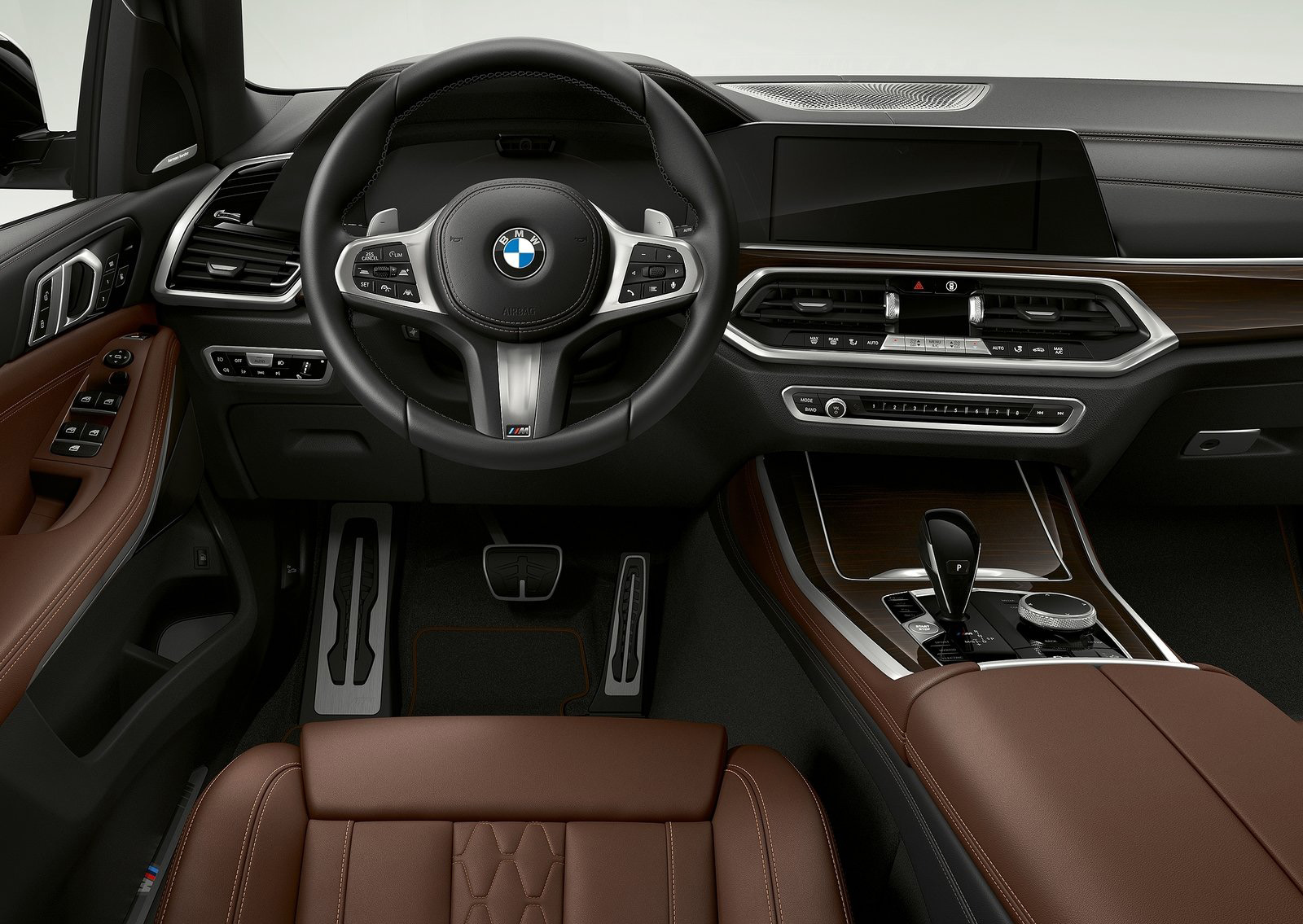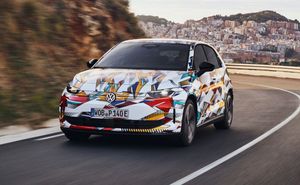SUVs make for natural plug-in hybrids as, because of their larger bodystyles, there’s more room for batteries. It’s why, back in 2016, BMW released the first version of its X5 hybrid, which brought plug-in power to the firm’s ever-popular SUV. It brought the now go-to combination of petrol engine with an electric motor and batteries and delivered an initial range of around 19 miles with a full charge.
But the real change came in 2018 when BMW announced that its new X5 would be introduced as a plug-in hybrid once again - but this time with a much larger battery which gave it a very-usable electric range of 50 miles. With that much EV running on tap, it turned the X5 into a very capable hybrid and one which could genuinely deliver a useful range that'd cover many driver's daily mileage.
Of course, you still got all of the premium features that you’d expect to find on a BMW SUV, but the new engine set-up meant far lower running costs.
There are now plenty of BMW X5 hybrids cropping up on the used-car market and though prices remain strong, a second-hand version could be an exceptionally good buy. Let’s take a look at what else you need to know.
Prices
As a result of its lower running costs, prices for the BMW X5 Hybrid have remained strong. Standard equipment includes 19-inch alloy wheels, automatic air conditioning and a full leather interior. You’re not going to be left wanting for features, that’s for sure. However, these models also benefit from a reasonably modern look, so they’re not ageing as much as you might think. As the third generation of X5, it showcased a more imposing look compared to the cars that had come before it. Certainly, they don’t look like an ‘old’ BMW, though the cabin feels a touch outdated by modern standards.
More recent models - which get the bigger battery - command a higher purchase price but, of course, there are savings to be made on running costs. These later models also pack all of the latest features such as a range of safety assistance systems and BMW’s latest displays. The general list of standard equipment was very good on the X5 hybrid, meaning there was little need to go too overboard with the optional extras.
Spotting a BMW X5 hybrid
BMW has chosen to go for an understated approach when it comes to the styling of the X5 hybrid. Of course, one of the easiest ways to tell it apart from regular models is that it’ll be whisper-quiet when it passes by running on electricity.
However, when it comes to the design, there are a couple of tell-tale features. The most noticeable one is the addition of a fuel filler cap, which covers the electric charging point. It means that the X5 Hybrid has two filler caps, as opposed to the single one you’d find on a regular diesel or petrol version. You may notice the subtle ‘e’ badges at the end of the X5’s name, but largely this is a car that doesn’t shout about its hybrid setup.
Inside, you do get some additional readouts that showcase the car’s range. Later models also feature a display on the main screen that shows how the car’s electricity is being used and the wheels it is being sent to.
Top tech
A hybrid’s success is often down to how much like a ‘normal’ car it feels and in that sense the X5 does very well because it largely feels like a regular version from behind the wheel. Original models combined a 2.0-litre turbocharged petrol engine with an electric motor and 9.0kWh battery - quite small by today’s standards. As such, you should get up to 19 miles from a single charge, while a total system output of 309bhp means that zero to 62mph is dealt with in just 6.8 seconds. Flat-out, it’ll do 130mph, too.
Step up to the more recent model and you’ll find that the powertrain has been beefed up quite a bit. Rather than the 2.0-litre engine you’d find in the older model, the new X5 hybrid uses a 3.0-litre straight-six petrol linked with an electric motor for a combined output of 389bhp. It means that the X5 hybrid is even quicker off the line, dispatching the zero to 62mph sprint in just six seconds and carrying on to a top speed of 146mph. Because the newer X5 hybrid is fitted with a far larger battery than before, it’ll travel for up to 54 miles on electric-only power.
However, what both cars share is their normal-feeling driving experience. For those wanting to try out an electrified vehicle without feeling too out-of-the-ordinary, the X5 hybrid could be a great choice as it feels largely like a regular petrol or diesel model.
Fuel economy
Better fuel economy sits at the heart of what a hybrid is all about. The earlier X5 hybrid did well in this regard, delivering a claimed 85.6mpg while emitting 77g/km CO2. Remember, it can travel for up to 19 miles on electric power before the petrol engine is called into action. It’s worth
noting, however, that those figures were created through the older NEDC testing, so they’re likely to be less than what you’d find if the X5 was tested with more stringent rules.
Move up to the more recent model and you’ll find those figures improved upon. BMW claims that you could see a fuel consumption of 200mpg and CO2 emissions of 31g/km.
However, the only way to properly see these low consumption figures is by keeping the batteries topped up. Leave them to go flat, and you’ll be left with a petrol engine working hard to propel a car that weighs more than usual. Leave the engine to work on its own and those consumption figures will quickly tumble.
What goes wrong?
When it comes to reliability, the first X5 hybrid - badged 40e - appears to do well, with few owners reporting issues. However, where this car seems to falter is with its electric range, which often struggles to match the claimed 19 miles and really dwindles in colder temperatures. Owners also report that when the batteries are fully depleted, the 2.0-litre engine has to work had to push the car along and, as a result, means that it rarely hits claimed fuel consumption figures.
Switch to the new car and things are still positive. Buyers praise the car’s smooth ride and comfort-focused setup, as well as the high-quality interior. However, many find fault with the car’s slow charging speed - which we’ll look at shortly - while others have said that the paint on the front end of the car is particularly prone to stone chips.
Charging
As we’ve already mentioned, charging is crucial to the efficiency of a plug-in hybrid. The first-generation hybrid, with its 9.0kWh battery, can only be charged at slow speeds so regardless of which charger you hook it up to, you’re looking at a three-hour charge time. The charging cables themselves are located under the boot floor, but despite this, there’s still a healthy 500 litres of boot space to play with.
When you move to the more recent X5 hybrid, you get a far larger battery. However, BMW hasn’t equipped it with rapid charging so as well as the increase in capacity, you’re having to deal with an increase in charge time. It’ll only charge at speeds of up to 3.7kW, which means that a 0-80 per cent charge will take over five hours regardless of the type of charger you connect it to.
Summary
The BMW X5 Hybrid is a big, premium and comfortable plug-in model with a strong level of equipment and well-finished styling. If you’re after an SUV with some form of electrified powertrain, the X5 could be a great choice - particularly the later model with its larger battery.
As the latest version ages, more will come onto the used market and make for a very attractive purchase. That said, those people who don’t want to break the bank will find the first-generation hybrid a very appealing prospect.









